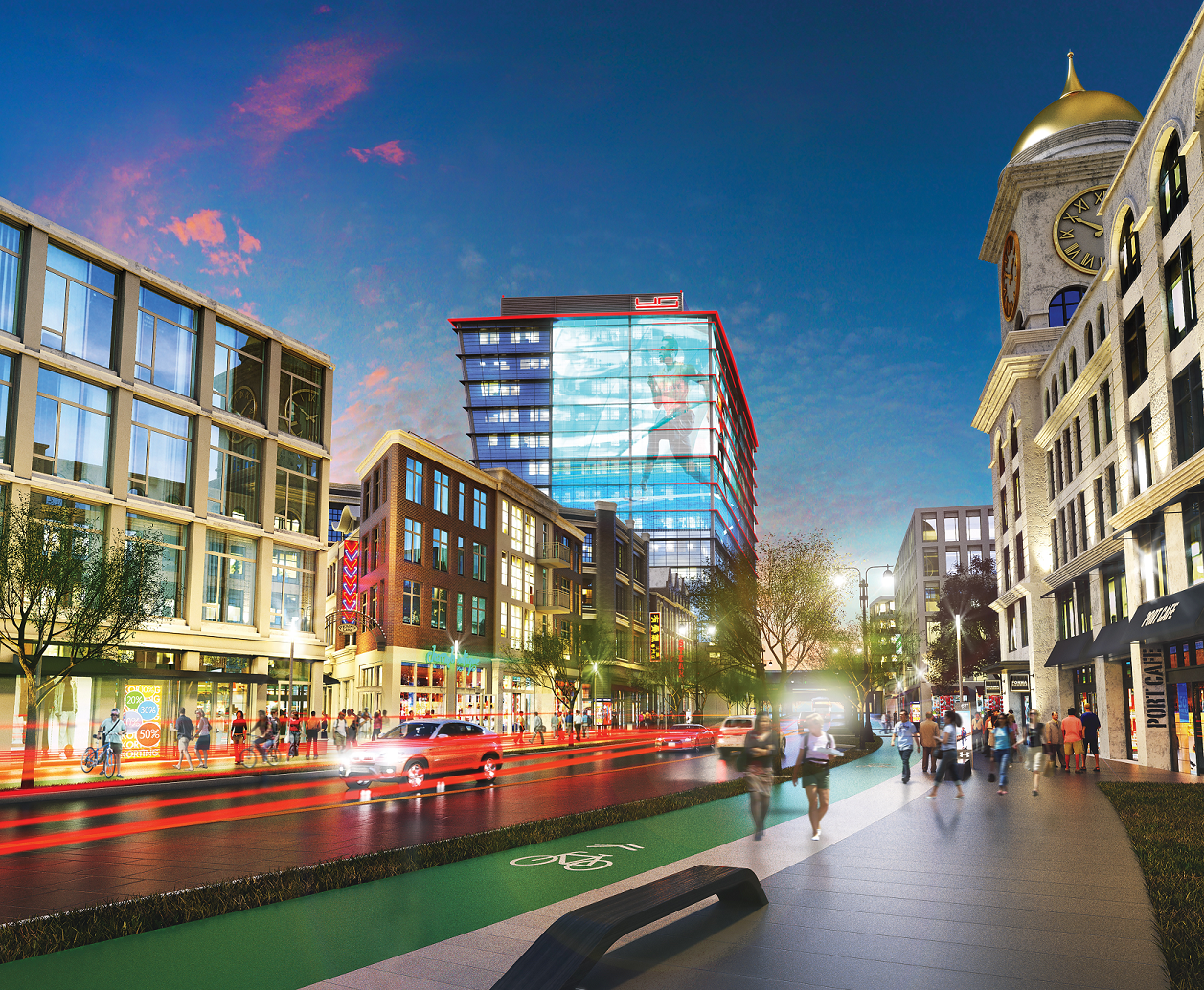Baltimore is seeing a development boom that should be good news for hoteliers eyeing the market. The city, touted as an authentic market rich with history, is only set to continue its growth, sources said, making it a market developers should keep top of mind.
“Baltimore is a cool city. It’s historic; the people and culture are awesome; and it has an attitude of being a positive, welcoming city,” said Michael Fuerstman, co-founder and creative director of Pendry Hotels.
Looking for new ways to drive profitability from your hotel asset? Introducing Hotel ROI: An innovative one-day event series brought to you by Hotel Management and in partnership with the Asian American Hotel Owners Association (AAHOA). Hotel ROI focuses on the critical issues in local markets and delivers actionable insights for immediate implementation. Discover our 2017 cities at www.hotelroi.com.
Pendry celebrated the grand opening of the 128-room Sagamore Pendry Baltimore on April 20. The hotel was developed in collaboration between Montage International and Sagamore Development Company, owned by Kevin Plank, founder, chairman and CEO of Under Armour. Plank is making significant commitments across Baltimore through strategic investments managed by his privately held company, Plank Industries, the parent company of Sagamore Development.
Those developments are sure to lead to more demand drivers to the city. The company’s $5.5-billion Port Covington project includes 235 acres of new development; 2.5 miles of restored waterfront; 40-plus acres of parks and green space; more than 14 million square feet of new, mixed-use development; and 3.9 million square feet for Under Armour’s global headquarters. Part of that mixed-use development calls for 630 hotel rooms combined with millions of square feet of office, residential, retail and restaurant space.

“We are sided up with I-95, which has 42 million cars a year going through it. You look at the amount of visitors the Inner Harbor gets, which is 14 million unique visits a year, the cars going by and all the beautiful waterfront, and the unique and authentic neighborhoods that exist, there is an incredible opportunity that hasn’t been seized yet in the city,” Weller said.
Additionally, he said Baltimore is enjoying a large migration of millennials moving to the city for many reasons, including a burgeoning food scene and housing prices that tend to be lower than neighboring cities.
Related Story: How to draw from local sources to drive business at your hotel
Tom Geddes, CEO of Plank Industries, said Baltimore’s attractiveness lies within its authenticity and the approachability of a city that is approximiately 650,000 people in size.
“It’s a very approachable place, an authentic place with great history. Baltimore doesn’t always take enough credit for its place in American history,” he said. “All of those things add up.”
Related Story: After tough 2015, Baltimore rebounds
Fuerstman agreed that there are many reasons to visit Baltimore, including sports. The city is home to the Baltimore Orioles and the Baltimore Ravens, which are great demand drivers to the area. Johns Hopkins University is a world-class institution that generates demand as well, he said. Additionally, the city is home to many businesses that drive demand.
“Baltimore is on a great upward trajectory,” Fuerstman said. “The more interesting, positive things that come to the city, it breeds more like-minded, interesting, positive business ventures and creative pursuits.”
By the Numbers
The Baltimore market has 25 hotels with 3,121 rooms in its pipeline, according to STR data. Of those, 10 hotels with 1,142 rooms are under construction as of April.
Breaking it down further, data from Lodging Econometrics shows 13 hotels with 2,505 rooms in the pipeline for the central business district. Of those, four hotels with 400 rooms are under construction.
“A little over half of the currently ‘branded’ projects in the pipeline are in the upscale and upper-midscale chain scales, which can be loosely described as select service,” JP Ford, senior vice president and director of business development for LE, said via email.
Of the hotels in Baltimore’s total pipeline, LE data shows that 10 hotels with 1,456 rooms are in the upscale segment. Seven hotels with 723 rooms are in the upper-midscale segment.
As of year-to-date March, the Baltimore market’s performance has seen growth, according to STR data. Occupancy increased 1.3 percent to 60.4 percent. Average daily rate was up 2.9 percent to $106.57, while revenue per available room was up 4.2 percent to $64.41. Demand growth (+2.1 percent) also has outpaced supply growth (+0.8 percent) in the market.
